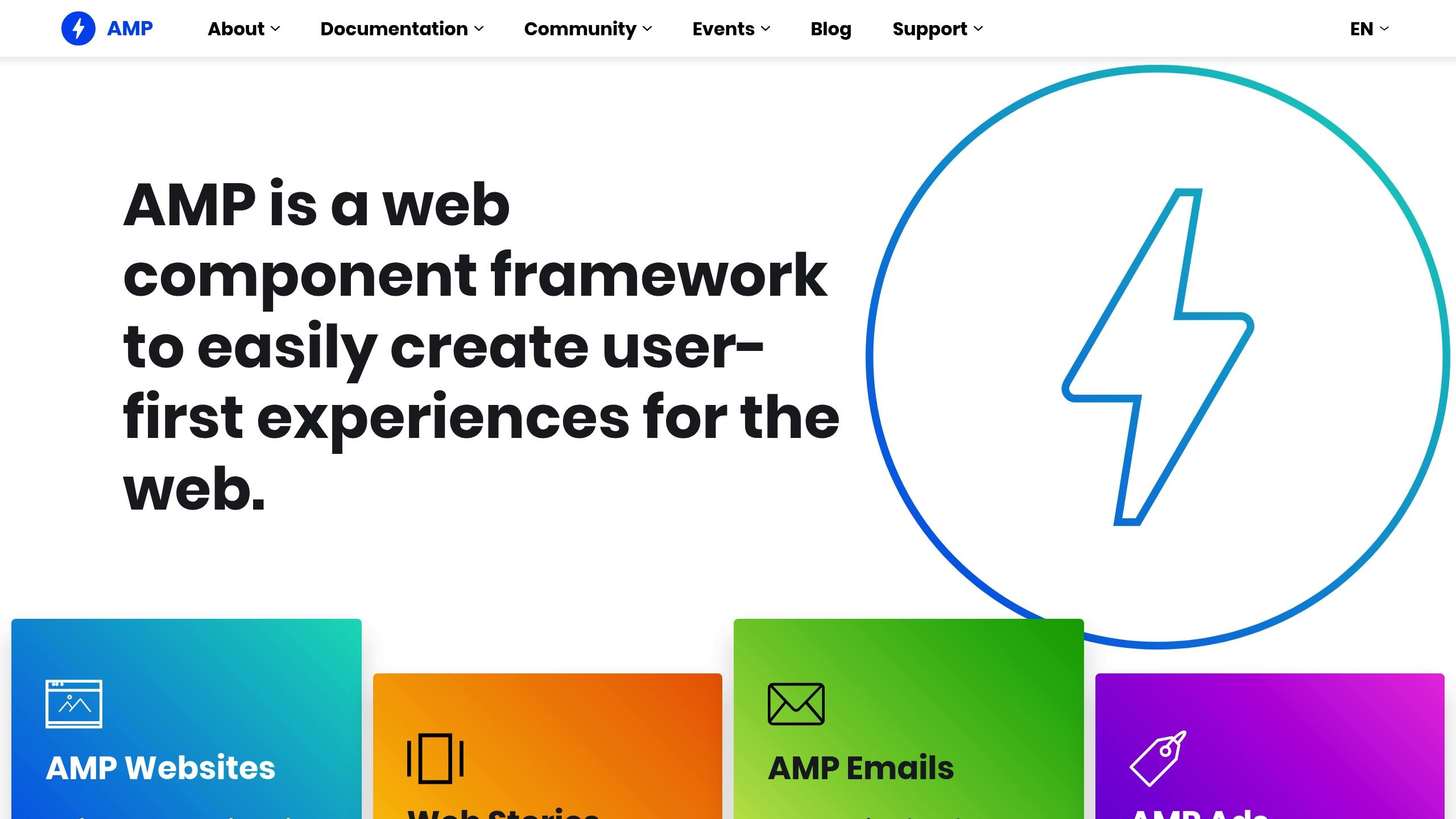Mobile SEO audits are more important than ever in 2025. With mobile-first indexing now standard, optimizing your site for smartphones and tablets is critical for visibility, user experience, and conversions. Here’s what you need to know:
Key Takeaways:
-
What is a Mobile SEO Audit?
A process to evaluate your website’s mobile performance, including technical issues, user experience, and mobile-specific SEO factors. -
Why It Matters:
Mobile devices dominate local searches, online shopping, and social media. Regular audits help fix issues, improve rankings, and boost conversions. -
Core Areas to Focus On:
- Technical Checks: Page speed, mobile rendering, indexing, and Core Web Vitals.
- Content Optimization: Readability, accessibility, and mobile-friendly formatting.
- User Experience: Navigation, touch-friendly design, and spacing for clickable elements.
- Local SEO: Optimize for "near me" searches and ensure consistent business info.
-
Recommended Tools:
- Google’s Mobile-Friendly Test for usability.
- Google Search Console for mobile insights and Core Web Vitals.
- PageSpeed Insights and WebPageTest for speed analysis.
Quick Audit Checklist:
| Focus Area | Key Action | Tools to Use |
|---|---|---|
| Page Speed | Improve loading times | PageSpeed Insights, WebPageTest |
| Mobile Usability | Fix small text, tap targets, etc. | Google Search Console |
| Local SEO | Add location schema, NAP consistency | Google My Business |
| Voice Search | Use conversational keywords | Content Optimization |
Start by reviewing your site’s performance with tools like Google Search Console and Mobile-Friendly Test. Fix high-priority issues (like Core Web Vitals) first, then refine content and design for mobile users. Regular audits will keep your site competitive in an increasingly mobile-driven world.
Technical SEO Audit Checklist: Boost Speed & Performance
Mobile SEO Audit Tools
When it comes to analyzing mobile performance, having the right tools is essential. Here’s a look at some key tools and how they help with mobile audits.
Using Google’s Mobile-Friendly Test
Google’s Mobile-Friendly Test is a quick way to assess how well your site performs on mobile devices. It evaluates several important usability factors:
| Feature | What It Tests | Why It Matters |
|---|---|---|
| Viewport Configuration | Adapts content to mobile screens | Ensures proper scaling for all devices |
| Text Readability | Font size and spacing | Eliminates the need for zooming |
| Tap Target Spacing | Space between links and buttons | Helps users avoid accidental clicks |
| Content Width | Horizontal scrolling issues | Enhances the browsing experience |
Test a variety of pages to spot inconsistencies in performance. The tool also provides screenshots that show how Google’s smartphone crawler views your page. This can help you identify rendering problems that might affect rankings. For a deeper dive, you can expand your analysis using Google Search Console.
Mobile Reports in Search Console
Google Search Console offers detailed insights into mobile usability across your site. Some of its most useful features include:
- Mobile Usability Overview: Displays the total number of affected pages.
- Specific Issue Categories: Highlights problems like small text or links placed too close together.
- Validation Reports: Confirms whether fixes have been successfully implemented.
Search Console also includes Core Web Vitals reporting, which plays a big role in evaluating mobile performance. Checking these reports weekly can help you catch and address problems before they affect your rankings. Once usability issues are under control, the next step is to look at site speed.
Mobile Speed Testing
To get a full picture of your mobile site’s speed, use multiple tools for testing:
1. PageSpeed Insights
This tool measures key metrics like:
- FCP (First Contentful Paint): Should be under 1.8 seconds.
- LCP (Largest Contentful Paint): Should be under 2.5 seconds.
- FID (First Input Delay): Should be under 100 milliseconds.
2. WebPageTest
Offers in-depth analysis with mobile device emulation. Features include:
- Simulated network throttling
- Testing for specific devices
- Waterfall charts to analyze resource loading
Allows you to emulate mobile environments and test:
- Network conditions
- CPU performance
- Memory usage
For the most accurate results, test during peak traffic hours. Running tests across different devices and connection types ensures you get a complete view of your mobile performance.
Mobile SEO Audit Steps
Using tools like Google’s Mobile-Friendly Test and Search Console, follow these steps to identify and fix mobile-related issues.
Technical Mobile Checks
Start by reviewing these technical elements:
| Technical Element | What to Check | Criteria for Success |
|---|---|---|
| Mobile Viewport | Meta viewport tag | Set correctly (e.g., width=device-width) |
| URL Structure | Mobile URL setup | Consistent and well-optimized |
| Robots.txt | Crawling rules | Doesn’t block mobile-specific resources |
| XML Sitemap | Mobile URL inclusion | Mobile URLs are present and indexable |
| Schema Markup | Structured data | Displays properly on mobile devices |
Make sure your site renders correctly on mobile devices. Once technical elements are in order, shift focus to content.
Mobile Content Review
Tailor content to meet the needs of mobile users. Check that headers, text, and multimedia are well-organized and easy to engage with on smaller screens.
Mobile Design Check
A well-designed mobile site is essential for both usability and SEO. Assess your mobile design with these points in mind:
- Use navigation that’s simple and touch-friendly
- Space clickable elements far enough apart to avoid accidental clicks
- Simplify forms by using proper input types and minimizing required fields
These steps will help you create a mobile experience that works well for users and search engines alike.
sbb-itb-880d5b6
Mobile SEO Best Practices
Setting Up AMP Pages

To get started with AMP (Accelerated Mobile Pages), follow these steps:
- Validate your AMP HTML markup to ensure it meets the required standards.
- Optimize images by using responsive techniques and enabling lazy loading.
- Integrate analytics to monitor and understand mobile user behavior.
- Configure caching (like Google AMP Cache) to speed up content delivery.
Mobile Local Search
Once you’ve improved speed with AMP, focus on boosting your local visibility for mobile users. Here’s how:
- Use location-specific schema markup to make your site more relevant for local searches.
- Keep NAP (Name, Address, Phone) information consistent across all platforms.
- Optimize for "near me" searches by creating content tailored to specific locations.
- Enable click-to-call functionality so mobile users can contact you instantly.
Make sure your business hours, directions, contact details, and service areas are easy to find – this encourages users to take immediate action.
Mobile Voice Search
Now that your local search is optimized, adjust your strategy to cater to voice search. Voice-driven queries require a different approach compared to traditional SEO.
Focus on conversational keywords and natural language by:
- Structuring content and FAQs around common questions like "who", "what", "where", "when", "why", and "how."
- Using conversational language in headers and meta descriptions to align with voice search patterns.
- Optimizing for featured snippets, as these are often used for voice search results.
"SearchX isn’t just an SEO provider – we’re an extension of your team, focused on accelerating your growth." [1]
Using Audit Results
Interpreting audit data is key to improving mobile SEO. After completing technical checks and implementing best practices, it’s time to dive into the numbers and make informed decisions.
Reading Mobile SEO Data
Use insights from the tools we’ve covered to evaluate performance metrics. Pay attention to these key mobile SEO indicators:
- Mobile conversion rate: Compare it to desktop performance to identify gaps.
- Mobile page load times: Monitor progress using Core Web Vitals.
- Mobile bounce rates: Look for patterns in user engagement.
- Mobile organic traffic: Track changes in search visibility.
Instead of focusing on isolated data points, analyze trends over time. For example, a consistently high mobile bounce rate could indicate serious user experience issues that need immediate attention.
Fix Priority List
Once you’ve reviewed the data, group issues based on their urgency and potential impact:
| Priority | Issue Type | Timeframe | Impact |
|---|---|---|---|
| P0 | Core Web Vitals | 1–2 weeks | Immediate |
| P1 | Mobile Usability | 2–4 weeks | High |
| P2 | Content Optimization | 1–3 months | Medium |
| P3 | Enhancement Tasks | 3+ months | Gradual |
Focus on high-priority problems first, such as:
- Fixing mobile rendering issues that disrupt user experience.
- Improving page speed to meet Core Web Vitals standards.
- Ensuring compliance with mobile-first indexing.
- Aligning mobile content with desktop content to maintain consistency.
Progress Tracking
Keep a close eye on your mobile SEO progress with a structured approach:
- Set baseline metrics and review regularly: Check Core Web Vitals daily, review mobile rankings weekly, and conduct in-depth performance evaluations monthly.
- Document changes and outcomes: Record every update and its results to determine which strategies are working best.
"SearchX focuses on outcomes and adjusts strategies based on what gets results. Real-time dashboards and regular updates keep clients informed of progress."
Next Steps
Use the insights from your audit to make meaningful improvements. Focus on refining your mobile performance regularly based on your findings.
Key Areas to Address
Mobile SEO audits require a structured plan that targets three main areas:
Technical Foundation
- Focus on Core Web Vitals
- Ensure compliance with mobile-first indexing
- Boost page speed
- Verify mobile rendering
User Experience
- Optimize mobile-friendly design
- Adjust spacing for touch elements
- Configure the viewport properly
- Ensure content is easy to access
Performance Tracking
- Measure mobile conversion rates
- Monitor page load times
- Analyze mobile bounce rates
- Track organic traffic growth
These priorities provide a clear path to actionable steps.
Getting Started
Here’s how to begin your mobile SEO audit:
1. Establish Your Baseline
Document current metrics like page speed, bounce rates, and conversions. This will help you measure improvement over time.
2. Create Your Action Plan
Outline specific tasks and prioritize them over the coming weeks:
| Week | Focus Area | Actions |
|---|---|---|
| 1-2 | Technical | Optimize Core Web Vitals, fix mobile rendering issues |
| 3-4 | Content | Review mobile content, adjust viewport settings |
| 5-6 | UX | Improve touch element spacing, enhance navigation |
| 7-8 | Review | Analyze data, refine strategies |
"You’re not paying for a checklist of tasks; you’re paying for outcomes. We’re relentless in our pursuit of success and adjust strategies based on what’s getting you results – whether that’s new tactics, shifting focus, or doubling down on winning strategies." – SearchX
3. Monitor and Adjust
Use real-time dashboards to track progress and adapt your strategy based on the data. Focus on metrics that directly support your goals.
4. Scale Your Success
Build on your progress by:
- Updating content to align with search intent
- Acquiring high-quality backlinks
- Adding advanced technical improvements
- Strengthening your local mobile search presence
Mobile SEO isn’t a one-time task. Regular audits and updates will keep your site performing well as mobile search continues to evolve.







